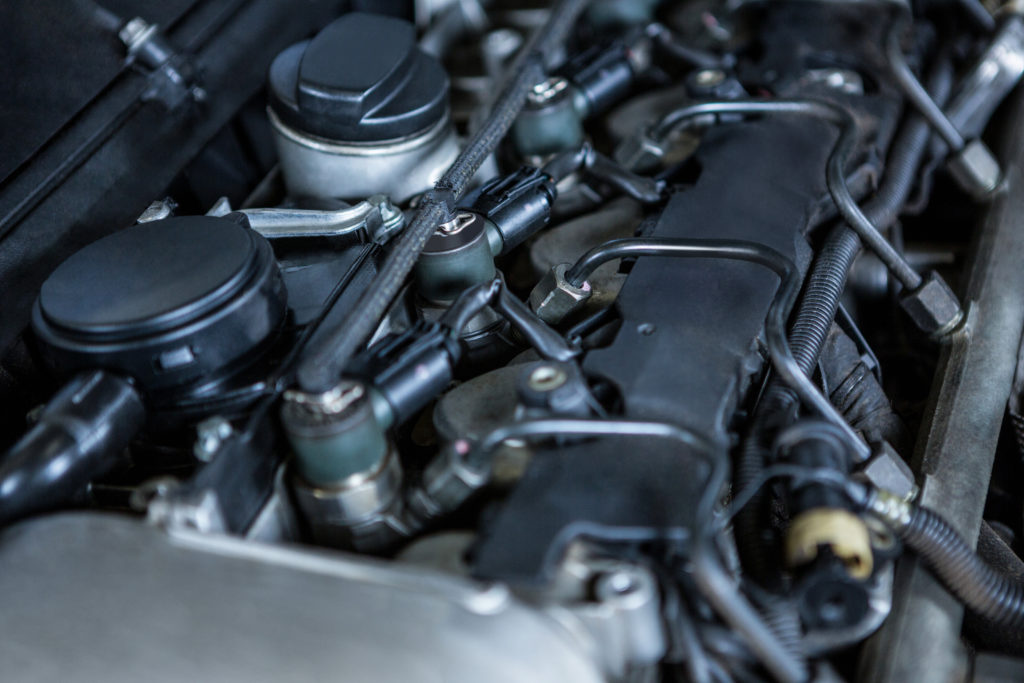The purpose of your vehicle’s fuel injection is to assure that the engine runs smoothly and efficiently by feeding it the right mixture of fuel and air. Before fuel injection systems, autos had to rely on a carburetor to supply fuel to the engine. Today, most newer vehicles are equipped with fuel injection systems.

Automobile parts photo created by peoplecreations – www.freepik.com
Fuel Injection Systems vs Carburetor Systems
Fuel injection systems offer several advantages over carburetor systems:
- Fuel injected systems deliver fuel in precise bursts, and are typically more powerful and efficient
- Fuel injection is also more economical and produces less emission pollution.
Although fuel injector systems offer advantages, they do experience problems such as a clogged or dirty fuel injector. Periodic maintenance should include proper cleaning of fuel injectors to address issues before they become serious and costly.
Five Signs of Fuel Injection System Trouble
The following are five signs that your fuel injection system may be compromised or heading for costly problems:
- Check Engine Light Turns On – Seeing the “Check Engine” light is an obvious sign of trouble. This light can signal several problems including a bad fuel injector. Any time an injector delivers too much or too little fuel, engine efficiency is reduced, which can trigger service light illumination.
- Stalling and Rough Idling – If your car is not getting enough fuel or an inconsistent supply of fuel, the idling RPM drops below the optimal level causing the idle to feel aggressive or rough. If the RPM falls too low, the car will eventually stall.
- Engine Vibration – A compromised fuel injector will cause the corresponding cylinder to not be able to fire. This will cause the engine to vibrate as it tries to finish each cycle without adequate fuel.
- Engine Misfires – When the engine does not get enough fuel because of a clogged injector, the engine can misfire as you drive. This may be felt as a struggle to accelerate or a hesitation after you step on the gas pedal. This problem should be addressed as soon as possible or the engine will be vulnerable to overheating or other issues.
- Fuel Leak – It is possible for a fuel injector to become broken or cracked from damage or old age. This will result in fuel leaks and inability of fuel to reach the nozzle. Inspection of the fuel injector may reveal gasoline on the exterior or on the nearby fuel rail. In many cases the leak comes from the fuel injector seal, which deteriorates over time.
To avoid fuel injection system problems, have the system cleaned and inspected as part of your regular maintenance routine.
